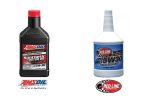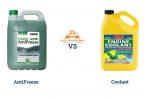It doesn’t matter whether your car is brand new or very old, you should pay attention to its most vital part. At the right pressure, the right viscosity adjusts for seasonal changes and engine wear.
If the oil pressure check light comes on, make sure everything is lubricated as soon as possible before your engine dies. Most often, the engine is having trouble or the oil is wrong.
Oil pressure – What is it?
Pumps that deliver oil to an engine use oil pressure. A high or low oil pressure indicates a problem.
Lubrication and cooling are achieved by pumping oil into the engine. In the absence of a certain pressure for this oil, some engine components might remain oil-deprived. Consequently, they would not function properly.
Maintaining engine temperature is also vital since it prevents the temperature from going beyond a certain point. Insufficient pressure will result in inefficient heat removal.
How to Increase Oil Pressure at Idle?

Issue 1: Pressure gauge malfunctioned
Some engines receive enough oil, and you are actually experiencing normal oil pressure.
Due to the defective or damaged oil pressure gauge, its reading won’t be accurate. In the end, your dashboard will think you have low oil pressure even though it isn’t.
The oil pressure gauge isn’t working in this case, despite everything else working.
Solution
The solution here is a replacement. This can be a DIY if you know what you are doing. Otherwise, you will need professionals to help.
Issue 2: Neglected car maintenance
It is possible that your car has low engine oil pressure when idling because you were probably neglecting car maintenance or not following the routine oil change.
Consequently, your engine will become dirty since it will have accumulated impurities due to improper maintenance.
Solution
You should maintain your vehicle properly, changing oil according to the manufacturer’s recommendations.
Issue 3: The level of oil is low
When you have low oil levels in your car, the engine cannot get enough oil through the oil pump.
Your car’s oil pressure reading will be low when idling due to this problem. As a result, the oil pump cannot pump enough oil into the engine to effectively lubricate it if you accelerate.
Solution
More oil is needed. Your oil pump could no longer pump enough oil into your engine, so the cause is a lack of oil, so you should add the correct amount of oil.
Issue 4: The viscosity of the oil is wrong
Multi-viscosity engine oils are typically used in modern engines, mainly in all weather conditions. The temperature in northern climates can fluctuate by over 100 degrees Fahrenheit, reaching highs of 90 °F in summer and lows of -10 °F in winter.
Cold weather can make these oils thin, but they thicken as temperatures rise, keeping their lubricating properties. Oils with low viscosity are better for cold-start lubrication in winter but may be too thin for hot-running engines in summer; reducing oil pressure and possibly damaging the engine.
Solution
Sometimes oil can be substituted if the correct oil wasn’t available at the time. Draining and changing the oil with the right oil viscosity may fix the problem.
Issue 5: Engine problems
In a new engine with oil clearances that are tight enough, oil pressure can be as high as 0.002 inches. Due to oil flow and oil pressure determined by the oil restriction, everything else is equal. The clearance between the bearings, especially at the engine’s back, near the oil pump, usually increases. As oil flows faster through the bearing clearance, pressure in the entire system is reduced.
Solution
The best way to fix oil pressure in this scenario is to use oil with a higher viscosity. The slight change will make up for the higher clearance of bearings. So the oil pressure that was increasing is now back to normal.
The other solution is to fix the bearings. Thicker bearings can lower the clearance, which may restore oil pressure.
What is the normal oil pressure reading?
When your car is idle, what is the normal oil pressure in the gauge?
In order to determine whether the oil pressure is returning to normal, this must be done.
Oil pressure gauges should have a normal range of 20 to 30 PSI without falling below 20 PSI. In other words, it means oil pressure is below normal levels, but not seriously low.
FAQs
1. Is weather a factor in oil pressure?
Ans. The weather certainly plays a significant role in oil pressure. For example, winter and summer oils have different viscosities. Due to its viscosity, oil pumps are able to determine the pressure at the outlet directly.
2. Does the pressure drop after a change of oil?
Ans. If the viscosity changes when you change the oil, it may affect the pressure. When you change the oil composition, you must keep track of the oil pressure.










Leave a Comment